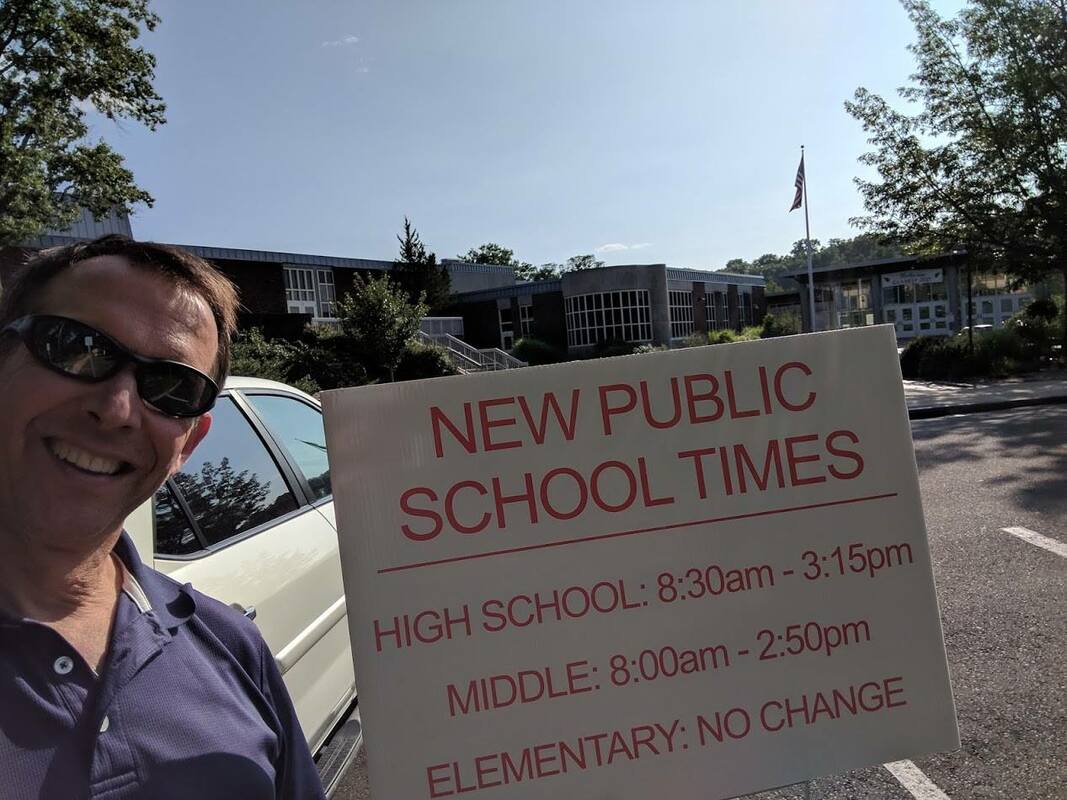|
Probably the most common question we're asked here at Start School Later is how many schools or districts have "made the change" or "started later." Unfortunately, this question has no simple answers.
On an anecdotal level, Start School Later maintains a list of known success stories and activity by state as we become aware of them. Other website, such as www.schoolstarttime.org attempt to do the same thing. However, none of these lists, created by individuals who happen to see information on a catch-as-catch-can basis, are comprehensive. Alas, no better lists exist. A comprehensive listing is not likely to exist in the foreseeable future. There are over 13,000 individual school districts in the USA, and close to 100,000 individual schools. These districts and schools change their hours all the time, at will, earlier as well as later, for a variety of reasons. Just because a district changes or is thinking about changing doesn't mean sleep research or student health or safety have anything to do with that decision. Just because a school moves later doesn't mean they won't move earlier the following year. And even if they did, we have no way to track that because there is no central clearinghouse of this kind of information for those 13,000-plus districts that tracks every individual school’s hours every year, and provides this data in a disaggregated form. Even if we had such a centralized clearinghouse, we still would have no way to know whether any given change was specifically due to sleep research or anything else or whether any given change is maintained from year to year. Since "later" is a relative term, it's not entirely clear which changes should be counted as "later." With districts "contemplating" a change, information is less likely to be made publicly available. The average bell time of US high schools has not changed significantly since 2007, the first year this statistic was recorded. We also know that close to 83% of US middle, high, and combined middle/high schools in the USA still start class before 8:30 a.m., and that in most states, over 75% of middle, high, and combined schools start before 8:30 a.m. Ideally, we would like to see a national or even statewide database in which both school start time and bus time data were collected annually and made available for analysis by school over time. Start School Later does not have the resources to do this collection for 13,000 districts and all the schools within them, and groups with the resources thus far have not had the motivation to collect it. One of our goals is to get state or national agencies to collect and disseminate this very data (or get a grant to do it ourselves!) because that in and of itself would work wonders in raising awareness about the nature of the problem. Over the years, various sleep researchers, have attempted to collect such data and abandoned the effort when they realized the magnitude of the task. If data collection is a means to assess the growth of the Start School Later Movement, there are better ways to assess this. These include the growing number of policy statements by leading health organizations, the increasing successful statewide legislation, the explosion in media attention to this issue, and the growth of Start School Later - as marked not only in the number of chapters and hits on the website but the recent national conference that brought together the worlds of health, sleep research, education, policy, and advocacy. |

 RSS Feed
RSS Feed